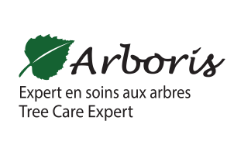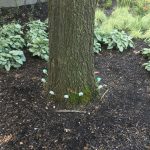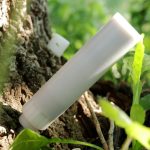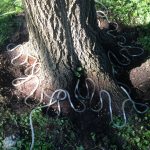Treatments
BIOLOGICAL CONTROL
Beneficial insects are those insect species that provide valuable services such as pollination and pest control. These predators and parasitoids are generally larger than their prey. They are quite capable of moving around in search of food, and they usually consume a large number of insect pests in their lifetime. This is great news for gardeners and growers because it means there is an effective, non-toxic approach to solving pest problems.
Biological control in arboriculture is a method of controlling tree pests and diseases by using living organisms to control insect and disease populations. Biological control methods can be used alone or in combination with other control methods to reduce the use of pesticides and other chemicals.
Organisms used in biological control include natural predators, parasites, and pathogens that target insects and diseases harmful to trees. Natural predators can be introduced into an ecosystem to control pest populations, while parasites can be used to kill specific insects that damage trees. Pathogens can be used to infect and kill insect or disease pests.
Biological control in arboriculture has several benefits, including:
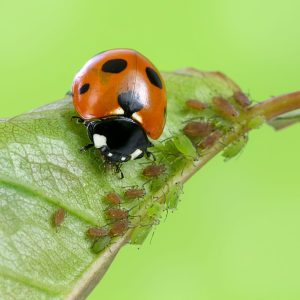
Reduced pesticide use
Insecticide or fungicide application: this technique involves spraying or injecting chemicals or organic products on trees to prevent or treat diseases and pests. The chemicals used are selected according to the specific diseases and pests affecting the trees.
Better preservation of biodiversity
Biological control can help preserve biodiversity by using methods that are more respectful of the environment and natural ecosystems.
More sustainable use of natural resources
Biological control can help to use natural resources in a more sustainable way by using methods that are more respectful of the environment and the ecosystem.
More targeted pest and disease control
Biological control methods target specific pests and diseases that harm trees, which can reduce damage from pests and diseases without harming other organisms in the environment.
Cost savings
Biological control can be less expensive than other methods of managing tree pests and diseases, especially over the long term. If the beneficial population gets established it can have a longer lasting effect.
PESTICIDES
Pesticides are used in arboriculture to control tree pests and diseases that can cause significant damage to trees and crops. Pesticides can be used to kill insect pests, mites, fungi, and other organisms that can cause disease in trees.
Pesticides can provide several benefits, including:
Tree protection
Pesticides can protect trees from pests and diseases, which can help maintain the urban forest.
Loss reduction
Pesticides can help reduce plant losses from pests and diseases, which can help reduce landscape maintenance costs.
Disease Control
Pesticides can help control tree diseases, which can help maintain tree health and reduce the risk of spreading diseases to other trees.
However, pesticide use can also pose risks to human health and the environment. Pesticides can be toxic to animals, plants and humans if used inappropriately. Pesticides can also damage the environment by contaminating soil, waterways and natural ecosystems.
Therefore, it is important to exercise caution when using pesticides in arboriculture by using integrated pest and disease management methods for trees, choosing less toxic pesticides, using limited amounts of pesticides, following safety instructions, and avoiding excessive applications.
WHAT ARE THE TECHNIQUES FOR PESTICIDE APPLICATION?
There are several techniques for applying pesticides in arboriculture, including:
Spraying
Spraying is one of the most common methods for applying pesticides in arboriculture. Pesticides are sprayed onto the leaves, branches and trunk of the tree using a high-pressure sprayer.
Injections
This technique consists of injecting pesticides directly into the tree using a system of micro or macro injections. This method can be used to fight against specific tree diseases.
Soil Soak
Pesticides can be applied directly to the soil around the tree to be absorbed by the tree's roots. This method can be used to control pests that live in the soil.
Soaking
Soaking involves dipping the tree roots in a pesticide solution before planting. This method can help prevent tree diseases early on.
Fumigation
Fumigation is a method used to control soil-borne pests by introducing pesticide gasses into the soil.
Ultimately, these pesticide application methods have advantages and disadvantages and it is important to choose the appropriate method based on the specific needs of the tree and the types of pests and diseases being targeted. It is also important to take precautions to avoid adverse effects of pesticides, such as effects on the environment and human health.
